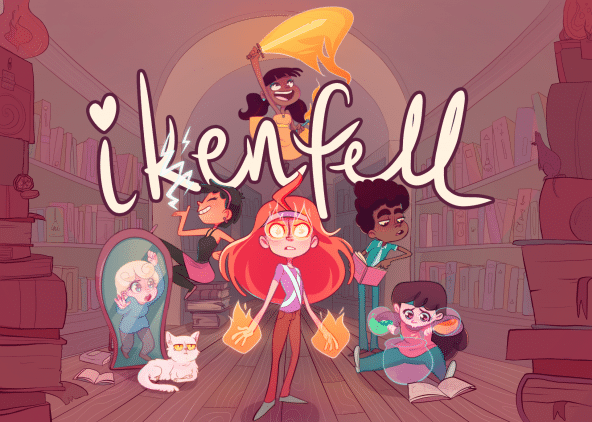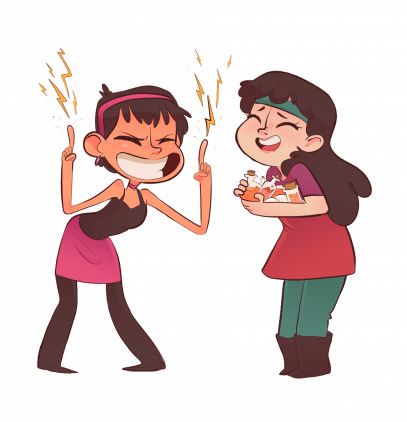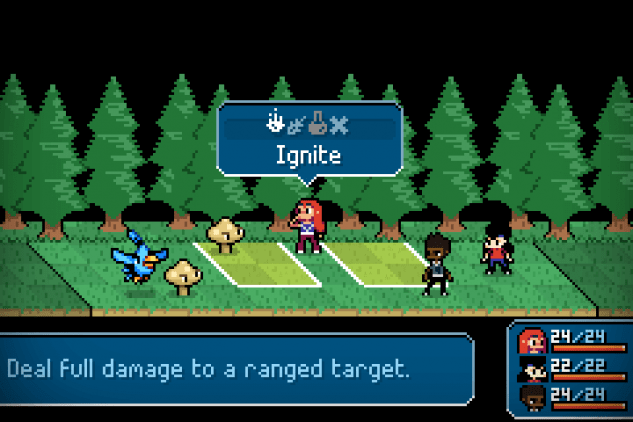Happy Ray Games’ Ikenfell was largely developed by one person, and you can feel creator Chevy Ray’s passion throughout the journey. As you wander through the magic halls of the titular school, you’ll find little shout outs to games long past that could only be captured by one person’s singular vision. Before I went to its Kickstarter page to find additional information for this review, I was able to pick out its three largest influences. Ray clearly loves the Mario & Luigi series, Earthbound, and Harry Potter.
With Ikenfell, Ray largely captures the magic of those franchises and adds to their legacy with their own unique ideas that push the game beyond a mere homage.
Game Name: Ikenfell
Platform(s): Humble Store, Steam, Switch, Xbox Series X|S, Xbox One, PS4, PS5
Publisher: Humble Games
Developer: Happy Ray Games
Release Date: October 8, 2020
Price: $19.99
Ikenfell opens with Mariette, an Ordinary with no magic powers, traveling to Ikenfell to find her missing sister, Safina. Saf never came home for summer break, and Mariette is worried that something is wrong. When she suddenly gains the ability to cast fire magic and finds her sister’s witch cap, her suspicions are confirmed.
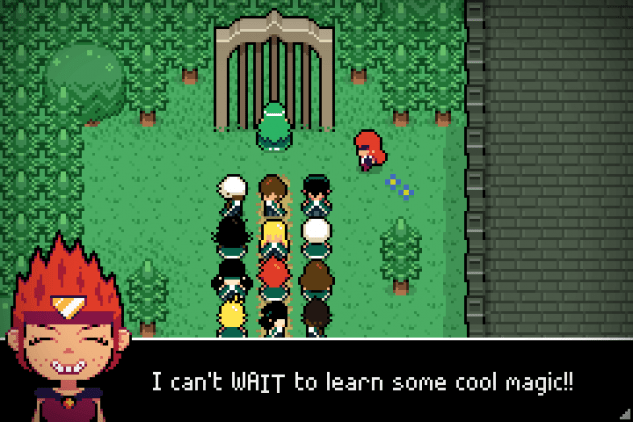
Ikenfell‘s plot hits a lot of traditional beats, but it has its moments, particularly in flashback sequences. They give Mariette and her party a look at key moments from the school’s past that reveal truths about people they thought they knew. Character is at the center of Ikenfell, and those sequences are instantly relatable to anyone who has ever caught someone they admire behaving in ways they haven’t seen before. The disappointment Mariette feels when she watches Safina bully a less skilled student is something that everyone can empathize with.
Five students accompany Mariette on her journey. While some are more interesting than others, each brings something meaningful to the table. The game’s dialogue can sometimes feel like a meandering fan-fiction, but these characters won me over before the credits rolled. Pertisia, a student in Safina’s class who once tried to get her expelled, is the deepest of the bunch. When Ray created the cast, he saw her clearly. Gilda has some pretty funny moments as well. Her relentless energy is contagious!
Ikenfell’s cast is a diverse bunch, filled with people of various races and genders. All six party members and most of the supporting cast are explicitly LGBTQ+, a detail that is a vital part of the game’s identity. This isn’t a story about coming to terms with your gender or sex. There is no villain harassing the cast over how they identify or who they love. The characters are just proudly themselves, and their love and warmth pervade through each scene.
Part of what makes the bond between Ikenfell’s characters so authentic is the way the game’s excellent combat system forces them to work together. Three party members fight on a 3 x 12 grid, each armed with a unique type of magic. All your typical archetypes are covered here. Mariette is a jack-of-all-trades who can deal out big single-target damage while buffing allies with her always useful “Motivate” skill. Ima uses zir magic paint to set powerful traps on squares and heals allies with a regeneration spell. Pertisia focuses on debuffing enemy defenses while boosting that of her allies. The way character skills complement one another makes the party feel like a cohesive whole.
Combat is turn-based, with each character moving a few squares before selecting a move with a predefined range. It’s a nice little wrinkle that forces you to think about positioning. Early on, I had trouble remembering not to block backline supporters with my offensive attackers. Similar to having double pawns in chess, your movement can get restricted, which often proves disastrous. Just as I started getting comfortable moving my allies strategically, enemies started using teleport attacks that completely wrecked my formations. You’ll have to think on the fly from time to time, but it helps to keep the combat lively.
Things never feel unfairly difficult. I lost one fight in my entire playthrough, and it was due to poor timing on the game’s quick-time events (or action commands for my fellow Paper Mario fans). While movement is important, the real key to mastering Ikenfell’s combat is nailing down the timing on both incoming and outgoing attacks. The timings are almost always intuitive, thanks to top-notch battle animations done by Hunter Russell. A large red circle hones in on Mariette when she casts Ignite, and, by pressing A right when it closes on her, you’ll multiply your damage dramatically.
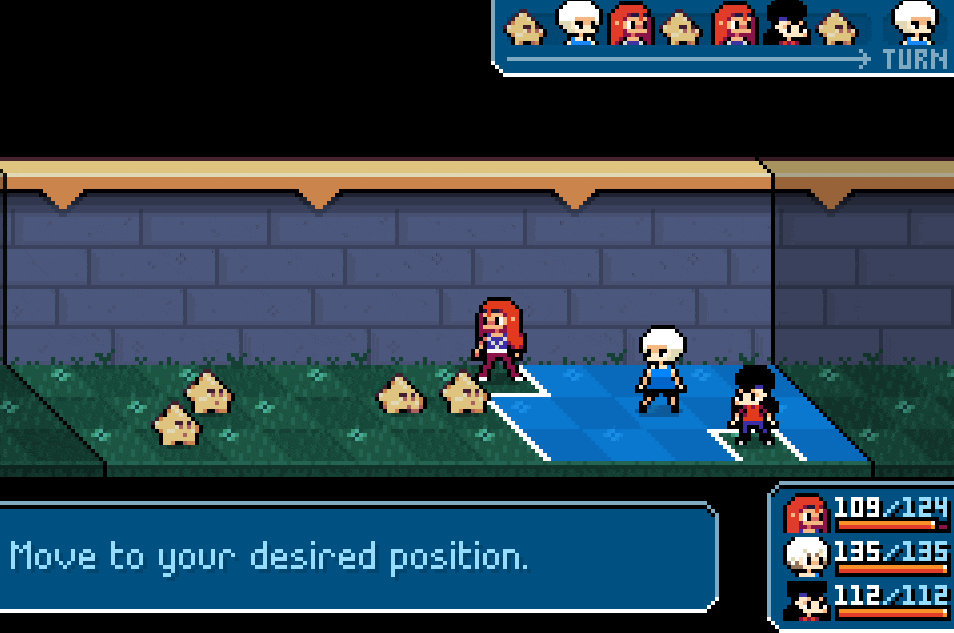
Those skill checks may be a double-edged sword for those less familiar with this type of battle system. Missing the QTEs can be deadly, with enemy attacks often doing four times the damage on an “Oops” compared to a “Great” block. On offense, failing to time a move correctly can even result in it failing completely. The stakes are high before each attack, and I loved how powerful it could make me feel. Nailing “Great” after “Great” against a tough foe and seeing the party laugh off their attacks is a satisfying reward for skill.
Still, Ikenfell offers those who don’t enjoy its combat a variety of accessibility options. You can turn the action commands to automatic and even use an auto-win button if you just want to experience the story. It’s a great tool that I hope we see more developers add to their games.
I don’t think the accessibility options will only be used by players struggling with combat though. While I never soured on the battles, they started to run long towards the end of the game. When there are five enemies to fight, blocking each of their moves takes a lot of time. Plus, most enemies are faster than your party, throwing out two attacks to your one. Unless you’re an action command junkie, you may start using that auto-win button to pick up the pace.
An excellent soundtrack by aivi & surasshu (known for their work on ‘Steven Universe’) mitigates pacing flaws significantly. The battle theme changes a few times throughout the game, and each is great. I love how the first’s guitar riffs lead into a more electronic sound that’s comparable to the masterwork known as the Celeste OST. There are even some vocalized tracks, although they’re a little more of a mixed bag. I still can’t tell if I like Gilda’s theme, “It’s Showtime,” or find its chiptune-meets-bubblegum pop vibe to be off-putting. It certainly felt out of place with the rest of the game’s presentation.
Ikenfell’s visuals are a little more Gameboy Advance than SNES, but its minimalist style is passable. None of the settings are truly memorable, which is a shame considering the magic school premise feels ripe for nifty locales. The dungeons you’ll explore all start to blur together by the game’s end, and a more distinct visual style may have made all the difference.
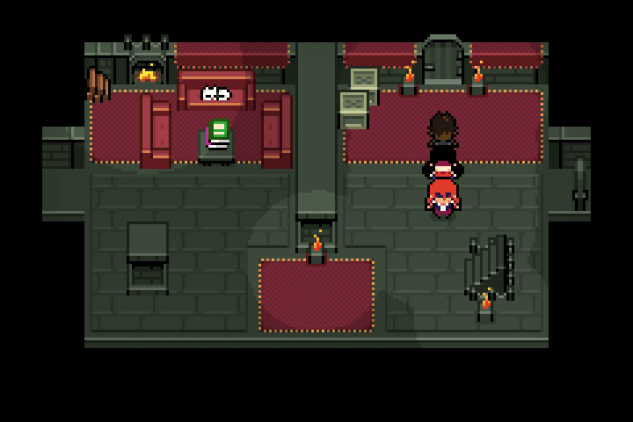
Ikenfell was made by an incredibly small team, so I can forgive its graphical shortcomings. If you’re a fan of the Mario & Luigi series, Ikenfell is a pretty easy recommendation. I have not finished the post-game content, but it took a little over 15 hours for the credits to roll. $20 may be a bit expensive for some, but this is the type of game I expect to see on sale a few times on the Nintendo eShop.
Ikenfell
Ikenfell
Ikenfell captures the charm of its muses and adds its own flavor to create something unique and rewarding. It’s a clear labor of love, and the result was well worth the effort.
Pros
- Creative and rewarding combat system
- Top notch music… mostly
- Diverse cast of fun characters
- Accessibility options
- Fantastic boss battles
Cons
- Combat occasionally drags in the endgame
- Mediocre visuals
- Uneven storytelling


